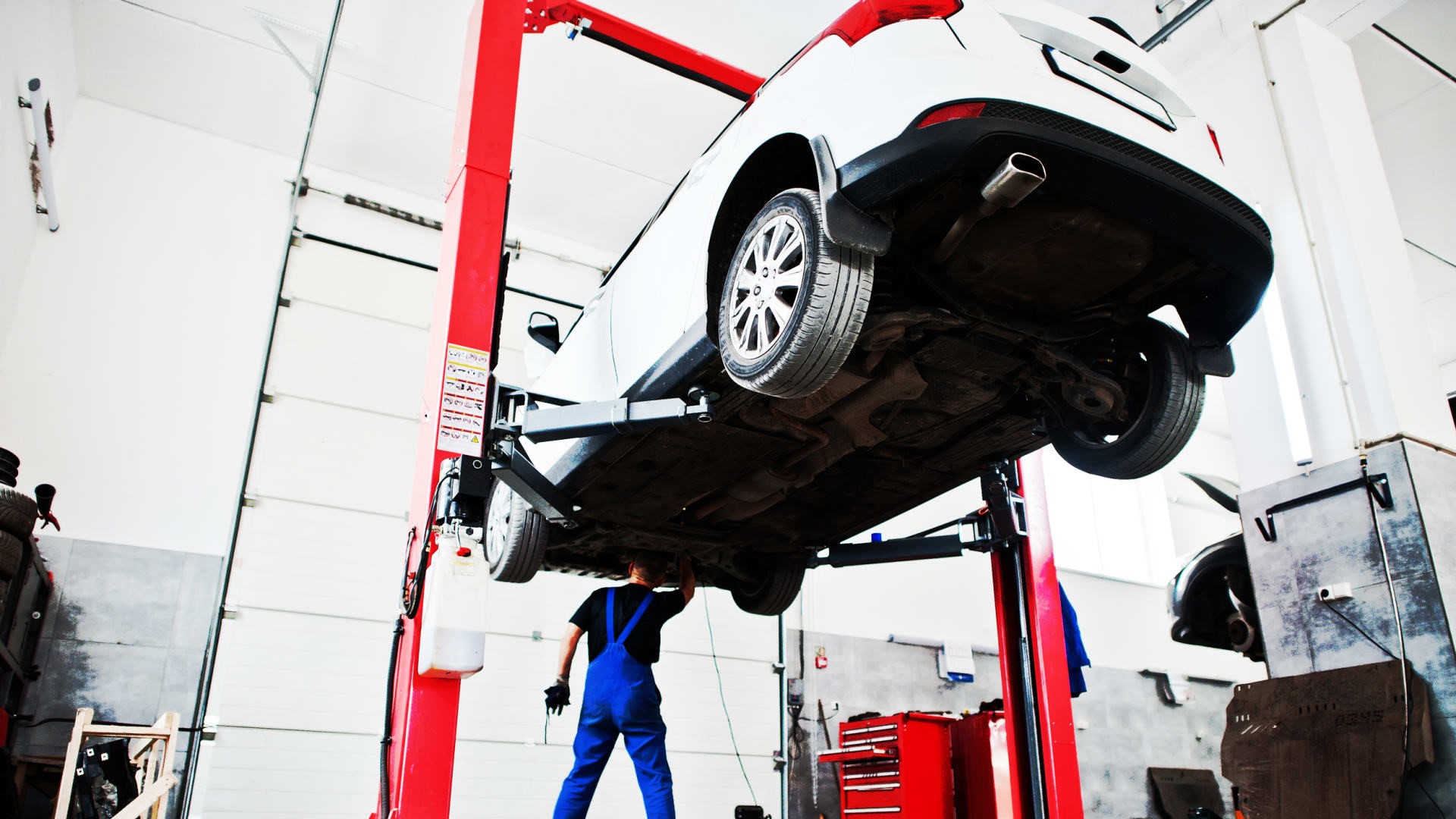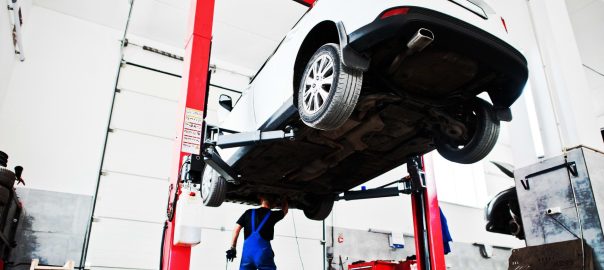6 ways AI and big data are transforming the auto industry
This technology will personalize all things automotive, from insurance to maintenance.
BY mlindsay
The automotive industry is shifting gears, accelerating into the future as new technologies push the boundaries of efficiency, sustainability, and safety.
The next phase is already here—the integration of artificial intelligence (AI) and big data within every facet of the industry. From the factory floor to the driving experience itself, AI and big data are fuelling safer, more efficient, and more intelligent vehicles, as well as better manufacturing and maintenance processes.
Here are six exciting ways AI and big data are reshaping the automotive landscape.
- Predict the future
Every car owner understands the value of regular oil changes and brake inspections, in the hopes of staving off more costly maintenance down the road. Now, big data and AI are turbocharging proactive vehicle health.
Enter: predictive maintenance.
Predictive maintenance gives dealerships the ability to monitor vehicle performance data remotely and continuously. Integrated in-car sensors collect data on the health of any given car, and leverage AI and big data analytics to assess issues in real time, keeping dealerships and drivers updated on what’s going on under the hood. Dealers can be automatically alerted to potential or ongoing issues in any given vehicle and can reach out and offer maintenance proactively—before a car deteriorates or even breaks down.
A related practice is preventative maintenance, wherein computer vision systems powered by AI are used to detect issues that would go unnoticed by the human eye, preventing them from getting worse and damaging the vehicle further.
Fleet management will particularly benefit from such maintenance technologies. By proactively identifying issues like failing components, worn-out tires, or fluid leaks, companies can know what issues to look for across the entire fleet and schedule repairs in advance, saving considerable amounts of money and frustration along the way. Commercial fleets from taxis to delivery trucks to busses can minimize downtime and disruptions, ensuring that packages (and people) are delivered on time.
- Eco-friendly roads
Emissions alone are not the only environmental impact of cars. It can take up to 151 cubic meters of water to manufacture a single vehicle and 11 million cars annually are taken out of circulation in Europe alone, representing as many metric tons of waste.
Big data analytics allow automakers to optimize vehicle design and manufacturing with a focus on sustainability. Data analytics on the most efficient and environmentally friendly materials and assembly processes will allow manufacturers to ensure that every vehicle has been made with the smallest environmental footprint possible. Manufacturers can also anticipate demand fluctuations more accurately, reducing waste by minimizing excess inventory.
By streamlining logistics and maximizing efficiency in manufacturing, automakers can also ensure they’re getting the right parts from the right places. Eliminating surplus and reducing the number of scrapped parts will not only save time and money but will create a more sustainable automotive manufacturing process.
Beyond the assembly line, AI enables driving simulations for any given model or design, allowing manufacturers to engineer vehicles for improved fuel efficiency and reduced emissions.
AI can also track and analyze data throughout a vehicle’s lifecycle and facilitate sustainable management even after a car has run its course. AI algorithms designed to understand vehicle health, from production to end-of-life, can identify opportunities for component reuse and recycling, optimizing resources, maximizing the recovery of valuable materials, and reducing environmental impact. These insights can also be integrated into future models, enabling manufacturers to create vehicles designed for easier disassembly and recyclability.
- Safety in autonomous driving
The development of autonomous vehicles (AVs) is fuelled by AI and big data. These powerful tools enable AVs to view and navigate their surroundings unmanned, through sensor fusion and machine learning algorithms trained to make real-time decisions for navigating complex road environments safely.
Autonomous vehicles create as much as 1 terabyte of data hourly. Accordingly, improvements to data gathering, storage, and analysis will make autonomous driving safer. As a technology that can make real-time decisions, AI will play a critical role in teaching cars to learn the rules of the road and improve performance continuously.
In addition, as AVs continue to track more miles, the AI systems powering them are receiving more and more data on roadway environments, creating more granular maps and protocols. The more precise and accurate the maps, the better equipped AVs are for navigating those environments smoothly and safely.
- Better roads, smarter cities
AI and big data will also improve driving on a collective level, beyond the performance of any individual car.
Autonomous vehicle technology companies, as well as smart city application providers and municipalities, can now analyze traffic patterns, commuter behaviors, and road conditions in real-time. AI-powered systems can use this data to suggest alternative routes, adjust traffic signals, optimize traffic flow, and reduce congestion, improving both the efficiency of transportation networks and enhancing air quality in urban areas.
The copious amounts of data gathered from smart city sensors allow urban planners to keenly understand which road designs work best, streamlining traffic and bolstering safety for drivers and pedestrians.
The ability to integrate these improvements both with external municipal data as well as with data gathered directly within the vehicles that interact with smart infrastructure will accelerate the quest for better roads and smarter cities.
- More personalized in-car experiences
Internet of things (IoT) integration has already changed the way people make their cars into personalized driving machines.
Big data will enable automotive companies to drive personalization even further by pulling from data-driven insight on driver preferences through vehicle data, driver data, or contextual data. This could include everything from taste in music to health and wellness needs, to driving preferences (i.e. preferred temperature in the cabin or seat adjustment settings) and regular routes, to the people a particular driver calls most often on the road. Imagine getting into a car that knows when the primary driver takes the wheel (versus another driver in the family) and can adjust the seats or temperature and prompt regularly used directions or radio stations.
With this treasure trove of personalized information, car companies can offer drivers certain additions or packages that reflect the way they drive. For example, drivers with growing families could opt for “child friendly” in-car entertainment while regular long-haul road trippers would get eco-driving options to maximize efficiency on the road and save on gas. And by collecting data on drivers’ actions on the road, carmakers can also reward safe driving with perks, exclusive features, or rewards.
Throughout the ownership lifecycle, drivers can opt for features and additions such as in-car gaming or passenger entertainment, integrated navigation systems, voice controls, and more. By accommodating driver preferences with a slew of updatable software and features, auto manufacturers can provide every driver with a vehicle best suited to their needs.
- Revolutionizing insurance
Car insurance may be a day-to-day burden to your pocket, but it’s certainly a friend in time of need—even more so now as AI and big data transform the way auto insurers offer tailored policies and process claims.
By tapping into vehicles’ telematics data—real-time information on driver decisions and actions gathered within a given vehicle—insurers can gain insights into individual driving behavior and time spent on the road and tailor insurance premiums accordingly. This encourages safer driving and reduces the risk of accidents, ultimately leading to lower insurance costs for consumers and fewer payouts for insurers.
On a purely logistical level, AI-powered claims processing also speeds up and simplifies once tedious processes, improving customer satisfaction and reducing administrative overhead for insurers.
Paving the way for the future
Like countless sectors, the automotive industry is undergoing an AI and big data-driven overhaul.
Unlocking these new opportunities for safer, more efficient, and more sustainable driving solutions will ensure a better future for drivers and the companies that get them where they need to go.
Yaron Saghiv is CMO of UVeye.

(19)






